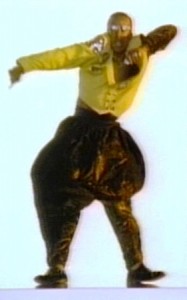
The WECA period had its share of capes, masks, and tights, but the most common heroic habit for the super-styled Canadian crime-fighter of the period was far more reserved fashion statement. This was the simple combination of jodhpurs and riding boots with a variety of top halfs.
Now jodhpurs, a type of pant with pipe stem tightness below the knee and elephant ear flaring from the knee up, originated in the north-western Indian state of Rajasthan. They were first worn in the West at the end of the 19th century when a prince of Jaipur (the capital of Rajasthan) brought an Indian polo team over to England to compete in a tournament in honour of Queen Victoria’s Diamond Jubilee in 1897.
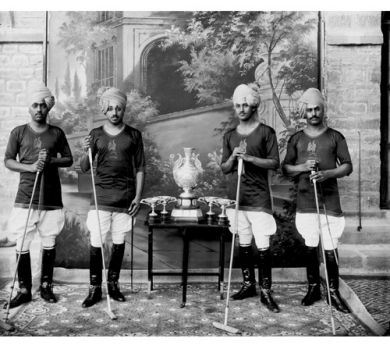
The tight lower pant was made to avoid entanglement in the stirrups while riding and the wide upper berth to allow for comfort and freedom of movement in the saddle. This fashion soon caught on with the military, especially the cavalry and, by the First World War as air warfare was born, with aviators.
Here is where the romance with jodhpurs began. Soon Hollywood directors had them on the set through the Silent Era.
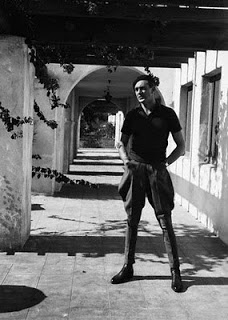
Explorers tramped around through jungles in them while balancing pith helmets on their heads. Hugo Boss gave them to the Nazis and Patton whacked his riding crop against them.
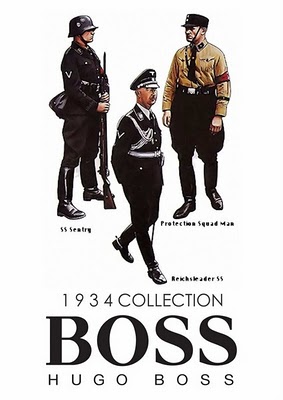
Today you can see them on motorcycle police and as part of the iconic R. C. M. P. uniform.
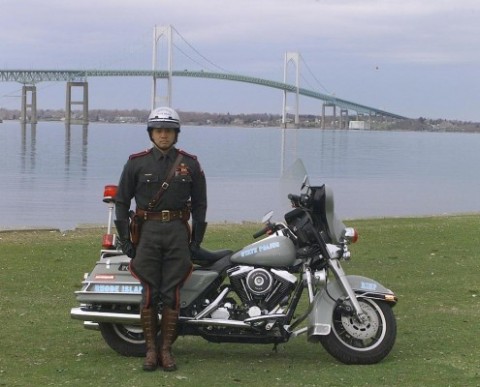
You can also see some distant echo of them in recent hip-hop fashion.
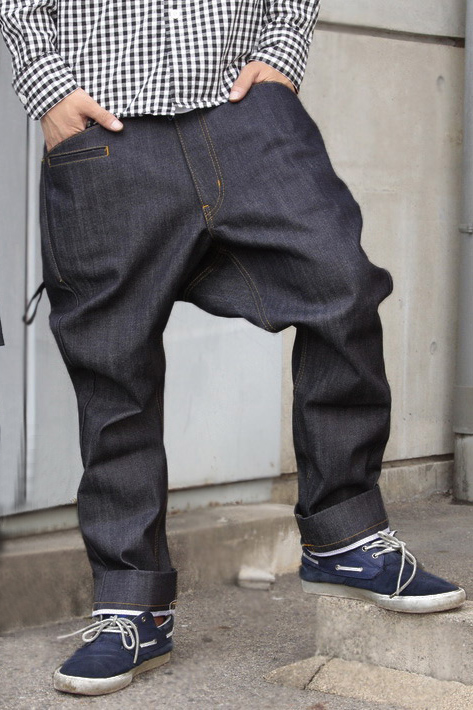
You can easily come up with a number of American comic book characters who relied on standard issue jodhpurs and riding boots for their look. Bama’s Doc Savage and Calkins’ Buck Rogers stand at the forefront.
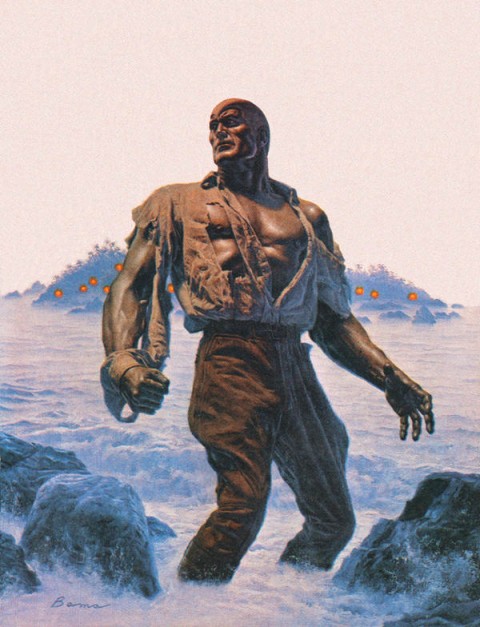
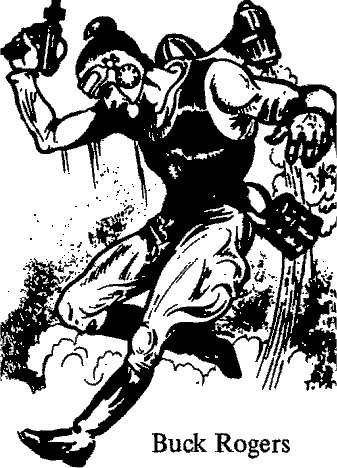
Military characters such as Blackhawk, any Mounted Police, and Airboy as well as explorer/adventurer types such as Jungle Jim, Frank Buck, and Congo Bill wore them. Golden Age costumed heroes such as Captain Triumph, Nedor’s trio of Fighting Yank, Doc Strange, and The Grim Reaper as well as more obscure crime fighters such as Major Victory, Sparkman, The Masked Marvel, and Professor Supermind’s son pulled them out of the closet when they got up in the morning. Closer to our own time we find the earliest version of Blade and The Rocketeer in these wide-topped breeches.
Our own WECA period comics produce an unusually high ratio of “jodhpurists.” First and foremost you have to count all the R.C.M.P. officers whether generic in the Canadian Heroes Comics’ fact based “The RCMP” series that was collected together in their Action Stories of the Mounties compendium or individual fictional heroes such as Bell’s Dixon of the Mounted, Anglo-Americans, “Men of the Mounted” and Kip Keene as well as perhaps Sargent Canuck even though he properly belongs to the B.C. provincial police.
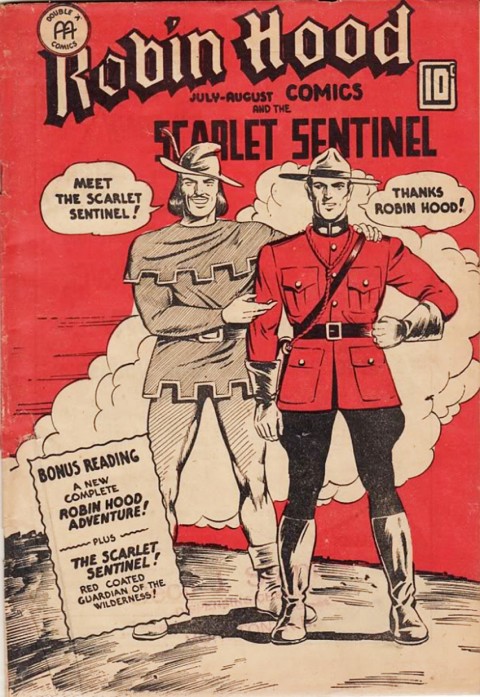
Next comes the other default group, all the air aces such as Crash Carson, Ace Barton, Ace Bradley, Scotty MacDonald, Dan Baldasse’s War Hawk, and Aram Alexanian’s Blackhawk clone, Black Falcon.
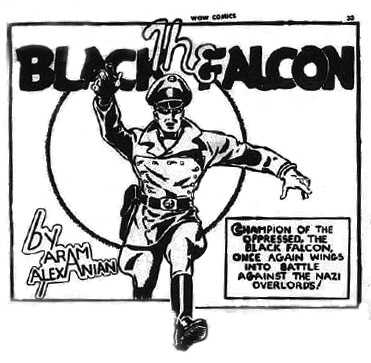
Whiz Wallace and Johnny Canuck would also perhaps fall into this category.
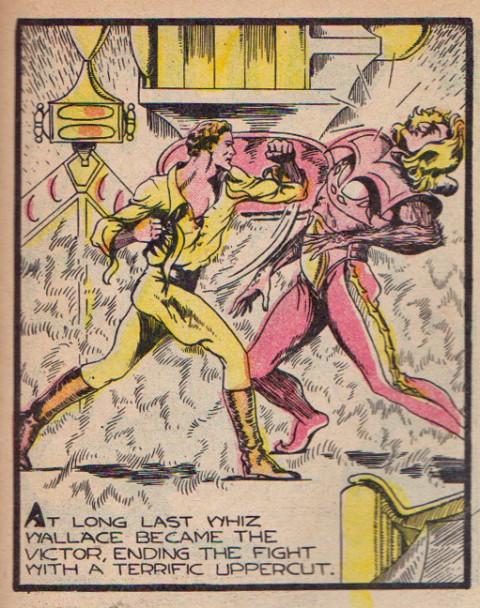
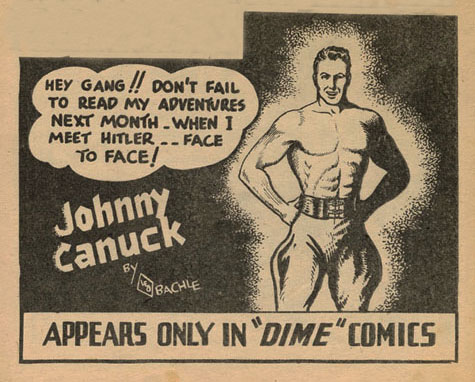
After this gang of Mounties and Air Men we get the explorers/soldiers of fortune such as Red Thortan, Jeff Waring, Doc Stearne, and Anglo-American’s Terry Kane tramping through jungles and bouncing from tropic isle to tropic isle in their leather boots and puffed pants.
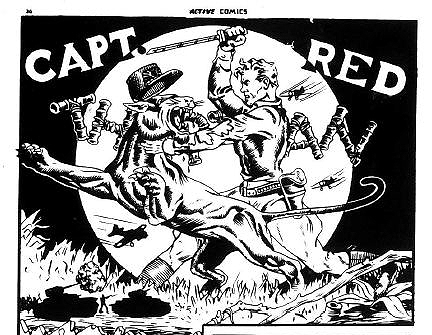
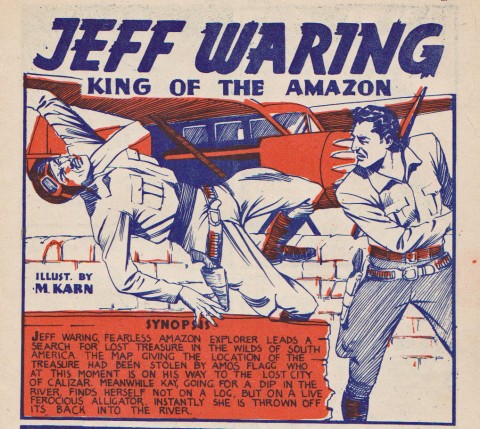
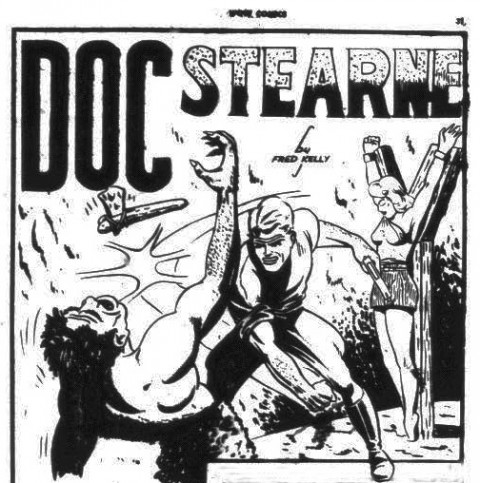
Terry Kane, breaking the mold, left off the riding boots or wore the jodhpurs over them so that he had pants stirrups extending under his footwear.
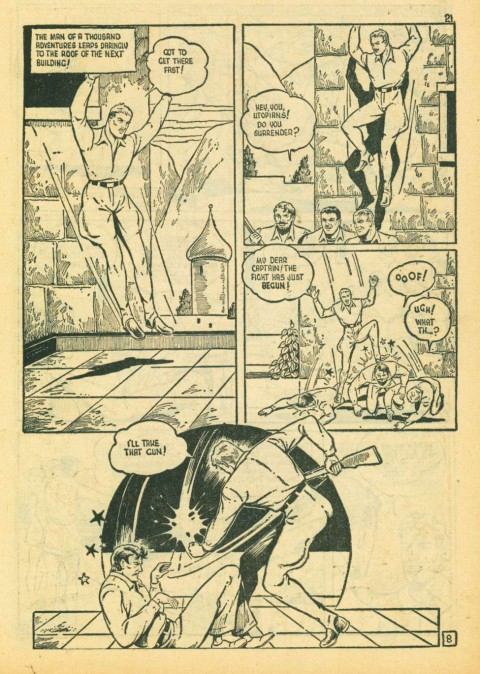
We might also include here Paul Dak’s academic adventurer, Mr. Totem, who appeared in the last issue of Triumph Comics.
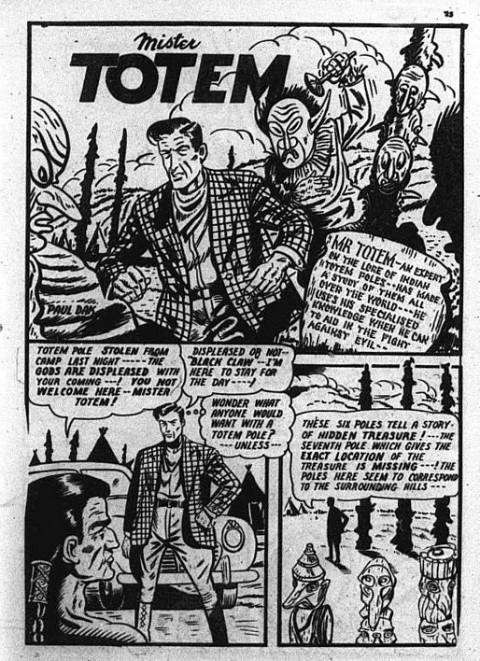
The last three I want to mention are a little more exotic. Cosmo (And His White Magic), for all intents and purposes, looks like a Buck Rogers clone, melds his below the waist riding outfit with futuristic, scientific gadgets of all sorts and, though he spends most of his comic book life fighting the axis and never gets to the 25th century, he does, in his final year manage find a way down to Atlantis.
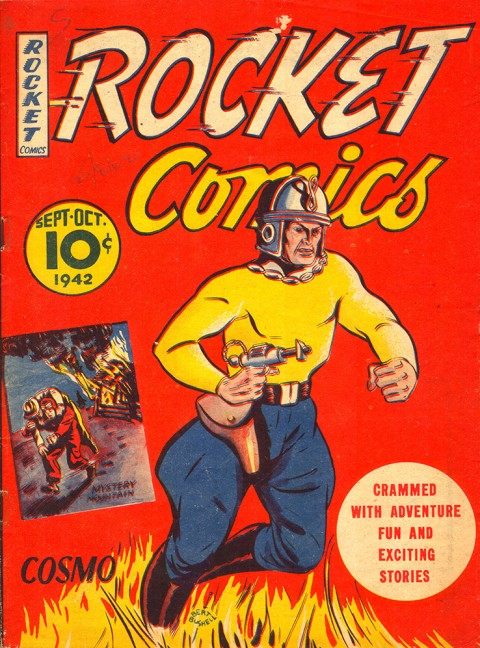
Next is the only masked hero of the lot, Dan Baldasse’s The Whistler. As far as I can see, he only appeared in two issues of Joke Comics, Nos. 13 and 15. He didn’t seem to have any powers, nor was he identified as belonging to any of the allied countries. He was just “…a mysterious masked benefactor of the oppressed” who aligned himself with the French underground in Paris and makes his presence known by whistling.
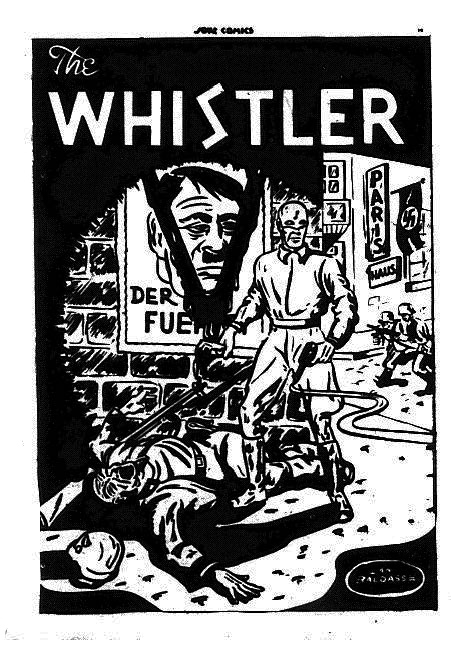
The last panel in Joke Comics No. 15 promises the continuation of the adventure in the next issue, but it never comes. Instead, Baldasse branches off with two “…hawk” characters, air ace War Hawk in Joke Comics No. 16 and masked crime fighter Night Hawk in Joke Comics No. 17.
Finally, perhaps the most important jodhpur jockey of the lot is Lance Valiant, better known as Freelance. His run in the WECA era is the longest of any original character including Canadian Whites totem Nelvana (even though she popped her head up briefly in 1947) who still radiates out over seven decades to our comic world today. Originating in an Antarctic lost civilization he enters the modern world at the time of the Second World War and aligns himself with the British. His first few battles are in Africa and Iraq but by the fourth issue of his eponymous title Lance finds himself in his jodhpur outfit in Crete and spends the rest of the war in Europe.
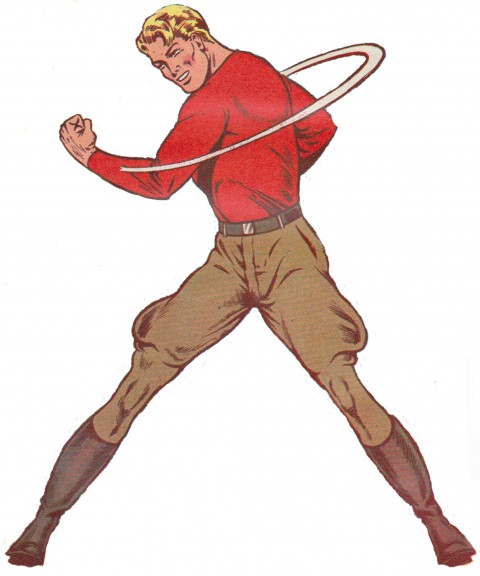
One curious thing I wanted to point out to everybody to see if it’s obvious or not, is the similarity in appearance between our own Freelance and Quality’s Capt. Triumph. Though their capabilities are completely different (Freelance is just a skilled and agile regular human being, like Batman, while Capt. Triumph, when he merges with the ghost of his twin brother, can fly, become invisible, and is indestructible), their appearance seems to be almost identical. They both have blond hair, red top (albeit short sleeves for the American hero) and a jodhpur and boots bottom half. On top of this, their first names are both “Lance.” Freelance first appeared in the summer of 1941 while Capt. Triumph didn’t show up for another 18 months.
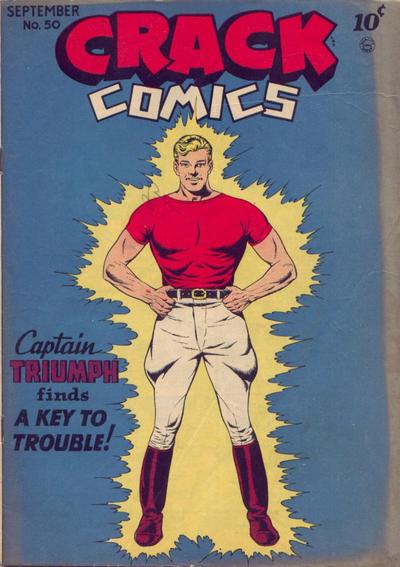
In any event, jodhpur and boots bottom halfs were a staple of Canadian WECA heroes’ habillement.




Once again another great article Ivan , I think for a future article it would be great to touch on the similarities between Canadian and American comic characters and who came first just like the Freelance/Capt Triumph angle you just wrote about
Thanks, Tony. Sounds like a good idea for a future column, but I’d have to give it some thought. Can anybody else come up with some other strong similarities between Canadian WECA characters and American comic characters?
I had not idea that jodhpurs were so widespread in comics, both north and south of the border. I also had always assumed they came into style far earlier in the west, it is amazing how widespread their use was in such a short time. Capt. Triumph remains one of my favorite Quality group characters–low key and unique. And in many stories, wonderfully drawn by Reed Crandall.
I agree, the resemblence with Freelance is probably too close to be just coincidence. With an 11-month gap, it’s easy to imagine someone in the Quality bullpen got a look at Freelance and was impressed with the simple, effective outfit. Artists didn’t enjoy drawing capes and complicated uniforms if they could keep it simpler–evidence the skin-tight superhero outfits…no folds, creases. and shading to labor over.
Thanks to your articles, I’ve now got copies of the Nelvana book in stock here and it goes up on my email “Eblast” tomorrow, to 6000 customers, in fact. It will be interesting to see how she is received. I have no clue, since nothing like this has ever appeared down here before. I did carry the last two books on Canadian comics (Canuck Comics and Invasion from the North) when they first appeared.
This means I will have copies at San Diego Comic-Con in July and in our next catalog, so am doing my bit. I’ll send you my write up or you can check my blog this weekend. I wanted an even longer description, explaining WECA and all, but we’re limited to 2000 characters on my site descriptions, so I had to edit down my enthusiastic essay… You can add your own comments on Nelvana on my “review” portion of my website if you are so inspired, and put a in link to your original articles here.
Keep up the wonderful work. I always look forward to your articles.
Thanks for your continuing support, Bud. I value it immensely. Here is the link to Bud’s blog: http://budplant.blogspot.ca/
What about similarities between Nitro and the modern Flash. Terry AllenBarry Allen, both police forensic scientist. Coincedence?
I’m just glad I was able to find out what Freelance’s name was.
You may have something here, Peter, but remember, for the first half-dozen or so appearances in Dime Comics, Nitro is Terry King. Lazare changes the surname inexplicably half way through and Nitro ends his run as Terry Allen.
Your right. At least the story of Nitro in Slam Bang Comics gave me my favourite comic book description of all time. When describing Nitro the editorial capsule describes him as “bestowed with no stange powers.” Can you be bestowed with no powers?
I always look forward to your articles. Learn something new.